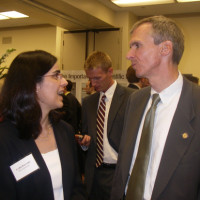GENI Moves Forward
In late May, the National Science Foundation, through its directorate on Computer and Information Science and Engineering (CISE), and BBN Technologies announced a cooperative agreement for BBN to operate the GENI Project Office. This announcement came a few months after the announcement of the GENI Science Council (operating under the auspices of the CRA’s Computing Community Consortium). Together the announcements represent a significant step forward in the GENI’s evolution from an idea to reality.








